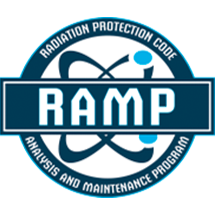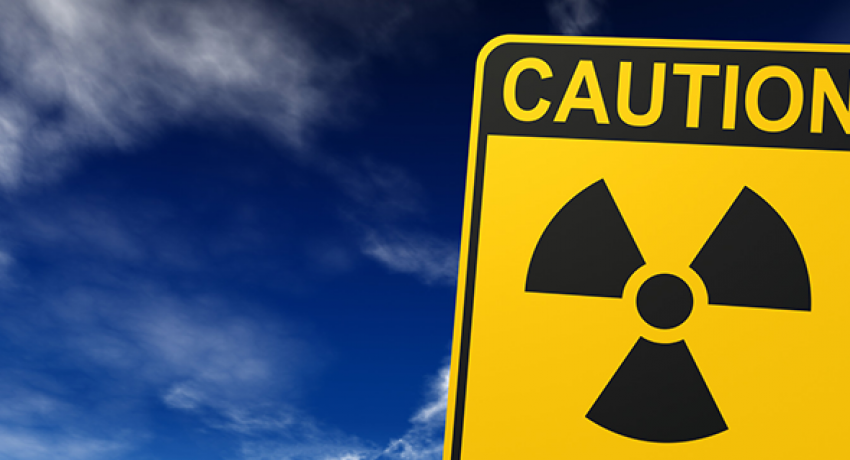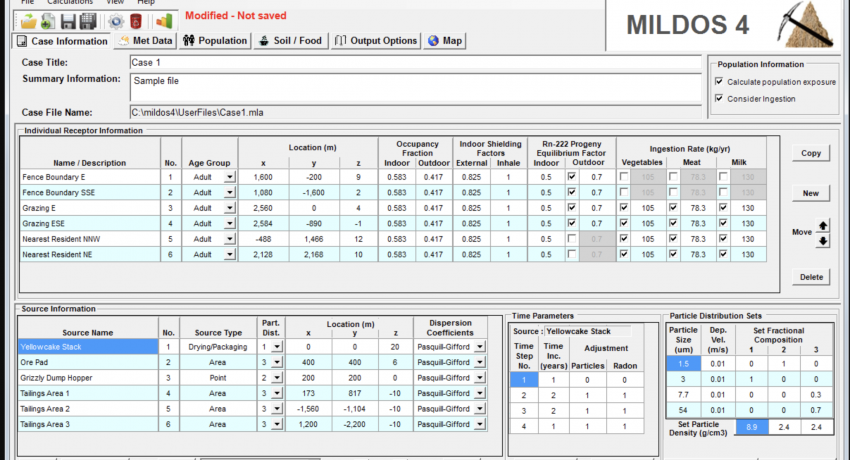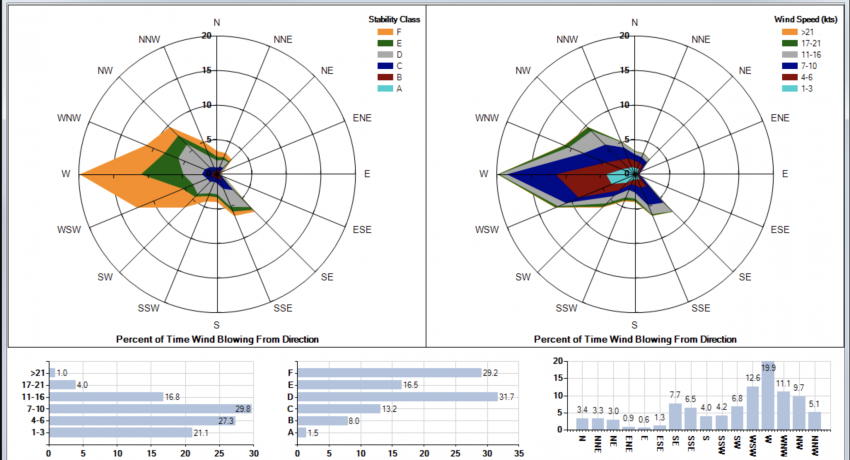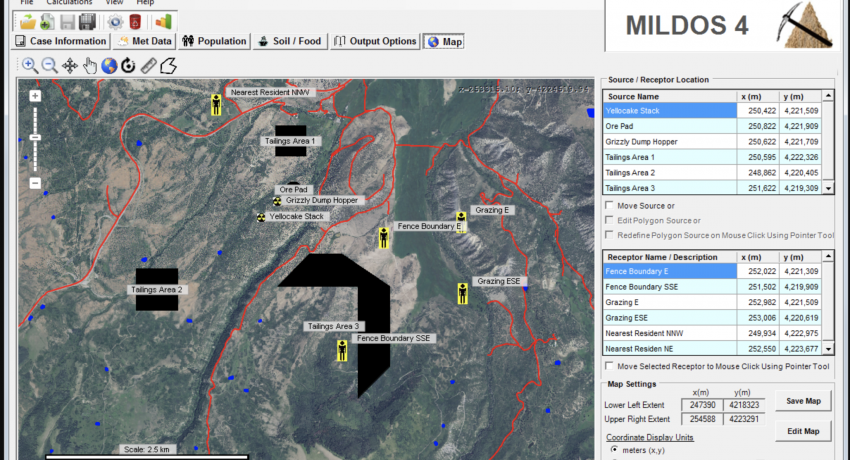Radiological impacts of airborne emissions from uranium mining and milling facilities
The MILDOS-AREA computer code calculates the radiological dose commitments received by individuals and the general population within an 80-km radius of an operating uranium recovery facility. In addition, air and ground concentrations of radionuclides are estimated for individual locations, as well as for a generalized population grid. Extra-regional population doses resulting from transport of radon and export of agricultural produce are also estimated.
This website is operated by the Department of Energy, Argonne National Laboratory for the United States Nuclear Regulatory Commission under the Radiation Protection Computer Code and Maintenance Program (RAMP).
Source Types
The airborne release of radon and particulates from eight different source types can be analyzed:
- Point sources [stacks, vents]
- Area sources [ore pads, tailing areas]
- New well field sources (ISR-specific)
- Well field sources (ISR-specific)
- Purge sources (ISR-specific)
- Ion-exchange sources (ISR-specific)
- Drying and packaging sources
- Land application sources
Scenarios Considered
Plume rise is considered for point, drying and packaging, purge, and ion-exchange sources. A wind-blown dust (erosion) model is available for area sources to address ore pads and tailings piles. Downwind air concentrations are estimated using a Gaussian plume model with dry and wet deposition to estimate ground concentrations for particulates. The ground concentrations are used in turn to estimate resuspended air concentrations and plant uptake with subsequent consumption by humans and animals. Dose to humans is calculated for the following pathways — inhalation of downwind and resuspended radionuclide air concentrations, external exposure from the contaminated ground and air concentrations, and ingestion of plants, meat, and milk.
Releases of particulates explicitly considered are limited to the radionuclides U-238, Th-230, Ra-226, and Pb-210 for the U-series decay chain and Th-232, Ra-228, and Th-228 for the Th-series decay chain. Other radionuclides in these series are implicitly accounted for under the secular equilibrium assumption. Gaseous releases are limited to consideration of Rn-222 and Rn-220 plus in the growth of decay products.
Features
Enhancements
As of version 4, the code was revised to run natively on Windows 7 to 10. Updates include an improved user interface, support for uranium ores containing Th‑232 and its daughter radionuclides, a revised area source model, revised ISR models, and the ability to perform sensitivity analysis on specific input parameters.
GIS
The improved user interface includes geographic information system (GIS) functionality to aid in visualization of the scenario to be assessed, including the proper consideration of area source shapes and positioning of receptors and sources.
Meteorological Data
Use current local meteorological data provided by the National Centers for Environmental Information. A pre‑processor was added to import recent meteorological data (for the U.S. and abroad) for use in air dispersion calculations.
MILDOS code developments are designed, implemented, and completed by Argonne National Laboratory (ANL) scientists under contract ID # NRCHQ2514D0003. The majority of the content in this webpage about MILDOS is imported from the ANL website.
